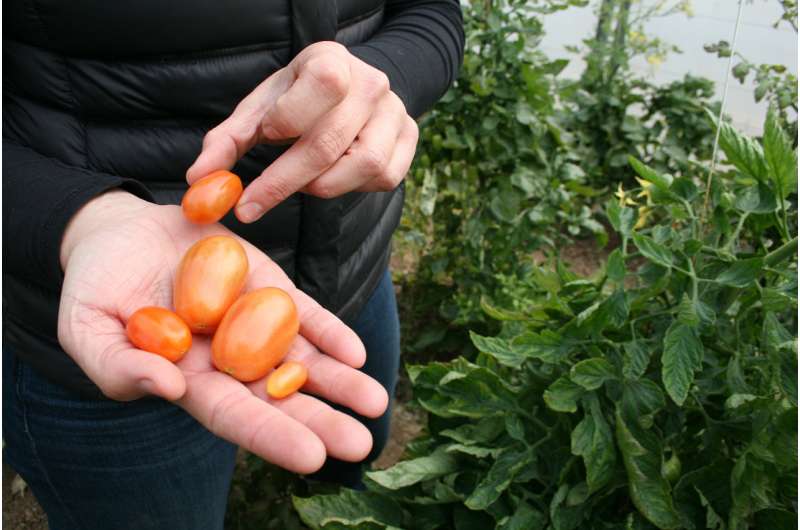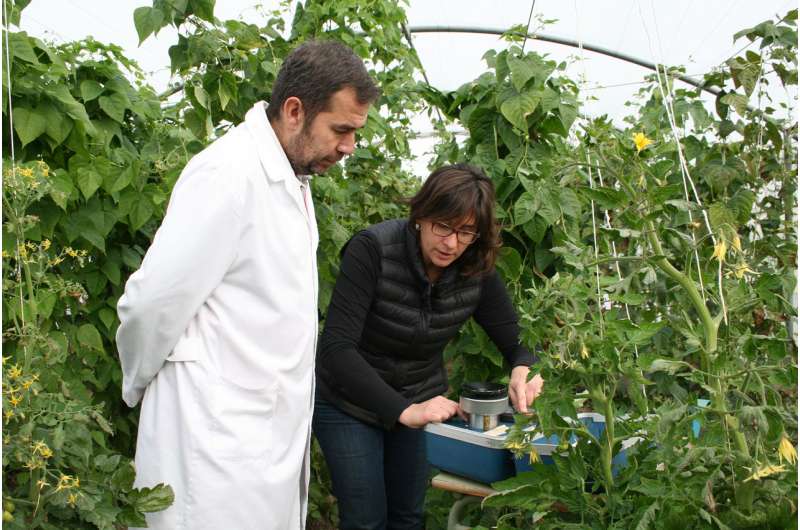Tomatoes of the same quality as normal, but using only half the water

Experts from the University of Seville have published a study showing that reducing the water used to irrigate cherry tomato crops by more than 50% has no effect on nutritional or commercial quality, it also increases the level of carotenoids, compounds of great interest in the food-processing industry. Carotenoids are vitamin A precursors, which are beneficial for the health, and have cosmetic uses.
These findings, published in Food Chemistry, are the result of a three-year study, during which the researchers analysed two varieties of cherry tomatoes and other new types of tomatoes, in both autumn and spring cycles.
This controlled watering deficit consists of reducing irrigation as much as possible during the most resistant phase of cultivation and increasing the supply of water at the start of the phase of cultivation that is most sensitive to stress.
"This is not about using half the water for no reason, but rather studying the water status of the plants and, knowing their needs, watering the crop in the right way and at the best time," explains agroforestry sciences teacher Mireia Corell.
This methodology benefits farmers, opening a new category of water-sustainable products differentiated in the market by reduced consumption of both water and energy. It also results in a better-quality product in terms of nutrition and environmental sustainability.
"Consumers demand healthier food so that they can live longer and better. But it's not only a matter of increasing life expectancy. It's also about making sure that we are healthy in our old age," says Antonio J. Meléndez, a pharmacy teacher at the University of Seville.
Carotenoids are highly versatile compounds that are important in agriculture, food, nutrition, health and cosmetics, among others. Therefore, the market for these compounds as food ingredients, for both humans and animals, is continually growing. Many studies conclude that appropriate carotenoid levels in the diet can play a positive role in protecting against ocular and cardiovascular diseases and different types of cancer.

These results are published in the doctoral thesis titled "A study of the contents of carotenoids and the phenolic compounds in tomatoes and flowers in the context of functional diet," by the researcher Elena Coyago Cruz from the Salesian Polytechnic University in Quito (Ecuador), under the direction of Corell and Meléndez. This technique can be extrapolated to other crops like olives and almonds with good results.
More information: Elena Coyago-Cruz et al, Antioxidants (carotenoids and phenolics) profile of cherry tomatoes as influenced by deficit irrigation, ripening and cluster, Food Chemistry (2017). DOI: 10.1016/j.foodchem.2017.08.028
Journal information: Food Chemistry
Provided by University of Seville




















